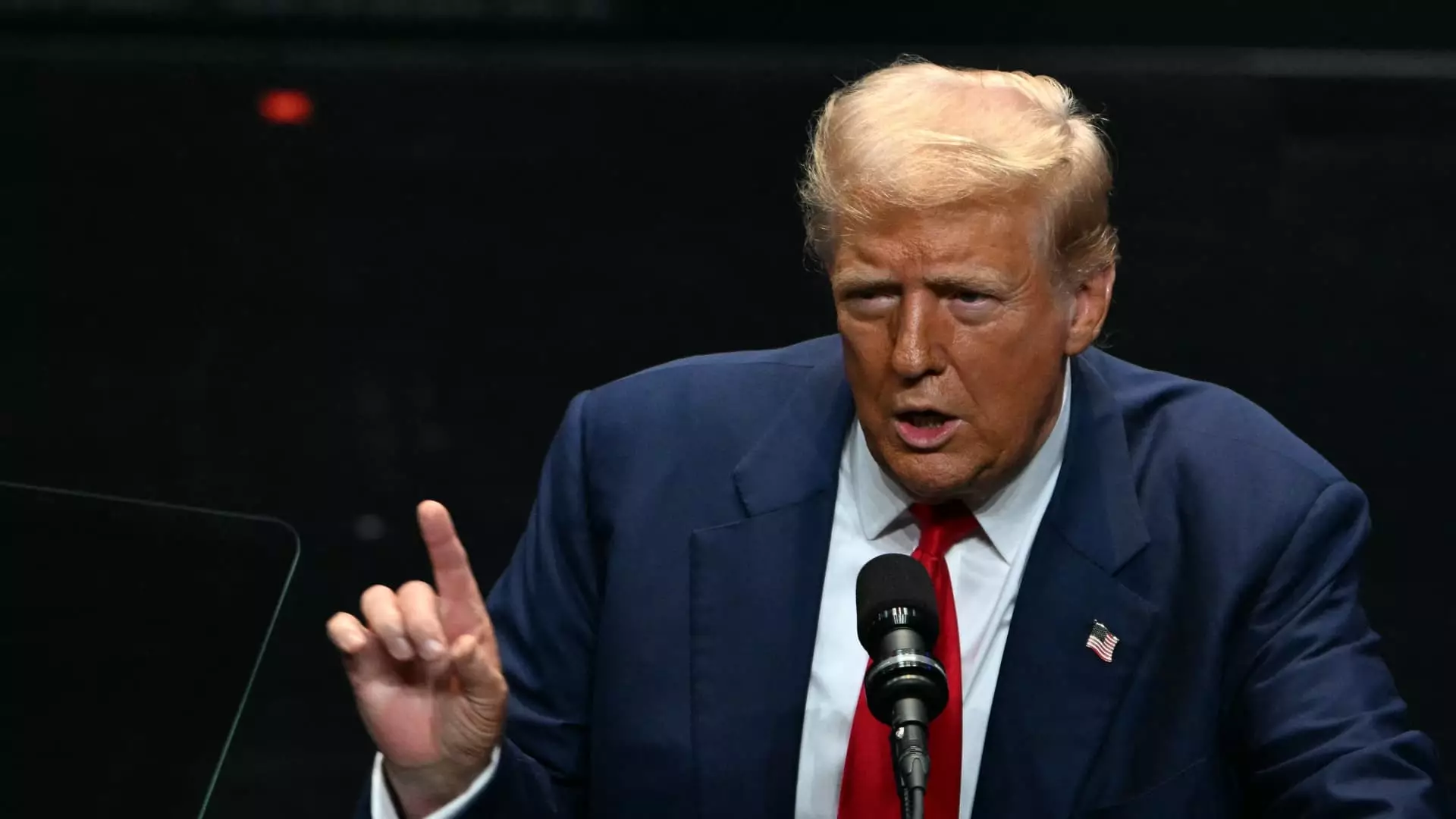In a recent rally in Savannah, Georgia, former President Donald Trump unveiled bold new proposals aimed at revitalizing U.S. manufacturing. As the 2024 election approaches, Trump’s strategy appears to center on enhancing his economic narrative, in sharp contrast to Vice President Kamala Harris, who is concurrently preparing to unveil her economic policies. Underlining the urgency of the moment, Trump promised a series of initiatives designed to attract domestic manufacturing by simplifying tax structures and revamping regulations that he claims have hampered growth.
At the forefront of Trump’s proposal is the introduction of expanded research and development (R&D) tax credits. He stressed that manufacturers could potentially write off the full cost of heavy machinery and equipment in a single tax year. This shift would represent a marked reversal from the phased-out benefits stipulated in his own 2017 Tax Cuts and Jobs Act (TCJA), which mandated a five-year amortization plan for R&D expenses starting in 2022. Trump emphasized the need for businesses to have immediate access to tax relief, framing his proposal as a necessary intervention to bolster the manufacturing sector.
Furthermore, Trump’s rhetoric this week also showcased his inclination toward a stringent trade policy. He pledged to impose steep tariffs—ranging from 100% to 200%—on cars imported from Mexico, a strategy reminiscent of his earlier trade confrontations aimed at protecting American jobs. This hardline stance signals Trump’s intention to prioritize domestic production in an era where global supply chains have become increasingly complex and interconnected.
While these proposals are designed to rally support from industrial workers and manufacturers, they also spark debates about their broader implications. Many economists express concern that such aggressive tariffs could provoke retaliatory measures from trading partners, potentially igniting a trade war that could have dire consequences for American businesses reliant on global supply chains.
In addition to tax and trade proposals, Trump hinted at appointing an exclusive “manufacturing ambassador” should he ascend to the presidency once more. This designated official would have the sole mission of persuading multinational corporations to relocate their manufacturing operations back to the United States—a move that signifies an intense commitment to reshoring jobs. While this idea might resonate well in Rust Belt states, the feasibility of this proposal raises questions. Critics argue that large entities often take such decisions based on a multifaceted analysis involving labor costs, regulatory environments, and logistical considerations rather than the influence of a single ambassador.
As Trump’s manufacturing plans gain momentum, the Vice President’s campaign will similarly ramp up scrutiny of his economic narrative. Kamala Harris has recently faced critiques from various sectors, including the business community, particularly regarding her proposed corporate tax increases and her regulatory approach. The contrast between the two candidates’ economic philosophies could not be clearer—while Trump leans toward deregulation and aggressive tax incentives, Harris appears to advocate for a more measured, albeit perhaps more burdensome, regulatory framework.
On the same day as Trump’s rally, Harris gathered supporters, including billionaire investor Mark Cuban, to discuss her vision for the economy. Cuban pointedly criticized Trump’s spontaneous and populist rhetoric, arguing that Harris’s policy development stems from a more informed and strategic approach—an assertion intended to underscore a fundamental divide between the two camps. Cuban contended that while Harris’s approach may involve higher taxes, the implications for corporate America might still be less burdensome than Trump’s across-the-board tariffs.
As the election draws closer, both candidates undoubtedly recognize the importance of framing a compelling economic narrative. Harris is expected to outline her own policy proposals in Pittsburgh, seeking to counterbalance Trump’s aggressive push toward manufacturing. Ultimately, the contrasting strategies between the Republican and Democratic nominees will shape the public’s perception leading into a critical election period.
As both candidates battle for the economic narrative, it will be vital for voters to critically analyze these proposals and their potential ramifications for the broader economy. Whether Trump’s ambitious manufacturing resurgence or Harris’s measured regulatory approach will resonate more deeply with American workers and businesses remains to be seen, but it will undoubtedly have lasting impacts on the nation’s economic landscape.

Leave a Reply